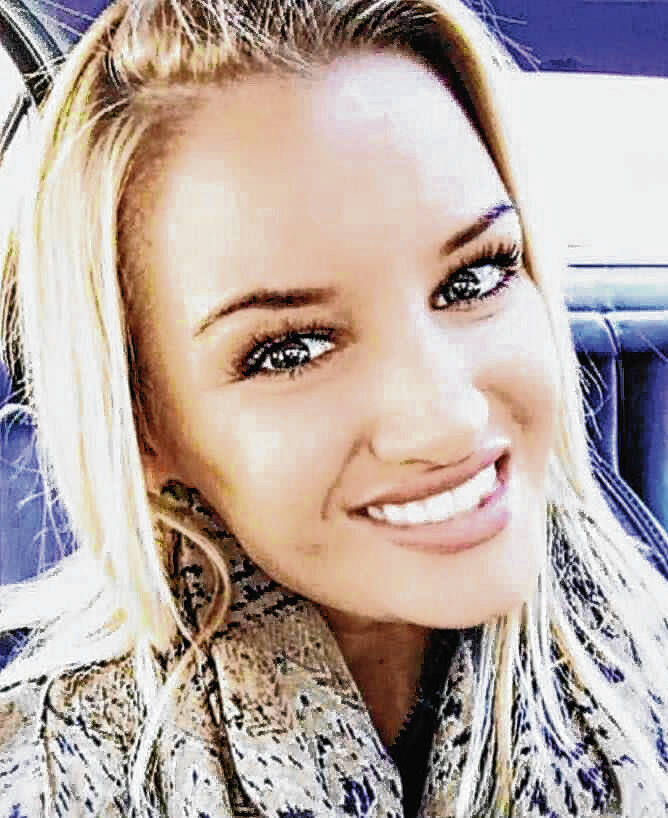
Anderson
As I pulled into the driveway after sitting with a client in the emergency department for hours, I asked myself, “Why did it take this long and for him to get this sick for anyone to teach him how to read a nutrition label?”
Let me set the scene. I am a recovery and health coach with the bulk of my career in emergency and trauma nursing in Indianapolis. When I moved back to Jackson County, it was in the hopes that I would be able to use my story and skill set to make a difference in the health of my hometown.
Whether in scrubs on the clock or otherwise, any nurse knows you can never turn off the nursing switch. For years, we are drilled to “assess, intervene, reassess and repeat.”
We constantly scan and analyze and play out 911 scenarios in our head to make sure we are ready when duty calls. So when my client came into my office for social services, I couldn’t help but focus my attention on his physical health, of course following Maslow’s Hierarchy of Needs.
I became inquisitive, asking questions that would seem out of order or unnecessary to any onlooker, but to me, I was painting the full picture. To add the final touches, I took some vital signs, and they confirmed what I already knew, so off we went, headed for emergency care.
Nearly 98% of American adults with type 2 diabetes have at least one comorbid condition, and nearly 90% have two comorbidities, or co-health conditions. This makes managing diabetes complicated.
The most common co-conditions are hypertension and obesity. It seems simple on paper. Eat enough of the good things, less of the bad things and “wallah,” a life of longevity, but it is isn’t this simple. Are poor food choices and lack of discipline to blame or is it access? Could it be resources and affordability we are missing? Maybe it’s education.
It’s starting to feel like a nursing school exam all over again, where every answer is the right answer but one answer is the most correct.
According to the Richard M. Fairbanks Foundation and the Centers for Disease Control and Prevention, more than 13% of Indiana’s young children from low-income families are obese before they even reach kindergarten, and one in three Hoosier adults are obese.
I understand new diagnoses need stabilized, but when appropriate and possible, why isn’t our focus both as clinicians and as patients to come off of medication? And why aren’t we investing more time preventing disease rather than treating it? If type 2 diabetes and high cholesterol levels are not just avoidable but completely reversible with proper nutrition, why are we treating it with pills and injections instead of nutritious food?
Statistically, the less money you have, the less nutritious food you’ll eat. This could be because sugary, processed boxes of food are subsidized but fruits and vegetables are not. Think of this, if two people are lifting a 500-pound boulder, then they share a load of 250 pounds each. If 10 people lift a 500-pound boulder, they share a load of 50 pounds each, and 20 people, 25 pounds and so on.
As I sat next to my client in the ED, I explained to him what neuropathy was and how his legs were hurting so badly because the high blood sugar levels were damaging his nerves. I picked up his Pepsi bottle and taught him the basics of how to read a nutrition label. I explained how fats, carbs and protein are macronutrients, and together, they make up our daily calories.
I explained why his insulin wasn’t touching his blood sugar levels because it couldn’t keep up with amount of sugar he was taking in and how in just the one bottle of Pepsi he was consuming 69 grams of sugar. That’s more added sugar than anyone should have over a three-day period.
After talking to my mother, a nurse at Schneck, I started to understand that the burden for health education is there but the time is not. I reflected back on my time as a nurse in a Level 1 trauma center. Would I or the rest of my team have had time to sit with someone and adequately teach them about nutrition? Sure, but the cardiac arrest coming through the doors wouldn’t have had anyone available for chest compressions.
My point is with an already overwhelmed health care system, it’s going to take more than just nurses, specialists and primary care clinicians to meet the needs of our sick family members, neighbors and friends. If a clinician and a patient are the only two lifting a boulder, then the task may be too great.
What if we as a community took the initiative to help out? What if we put together a community garden full of nutritious food for all to enjoy at no cost other than labor?
My uncle, Albert Skaggs, once said, “If we each do a little, we’ve all done a lot.” We all have a story and a skill set we can utilize for the greater good of our community. We each have something to bring to the table, and in Seymour, Indiana, home of the purple and white fighting owls, there’s enough room for all to eat. I’m passionate about health and helping others. My name is April Anderson, and I was born in a small town.
“Give a man a fish and he eats for a day. Teach a man to fish and he eats for a lifetime.”
